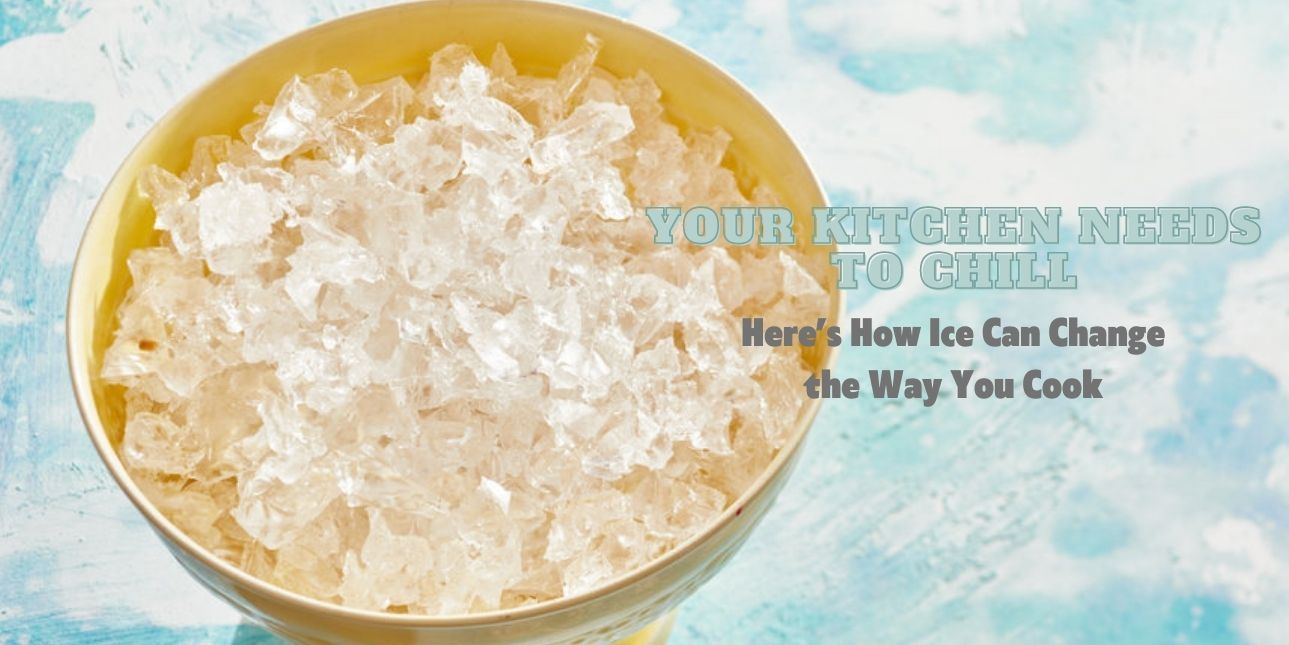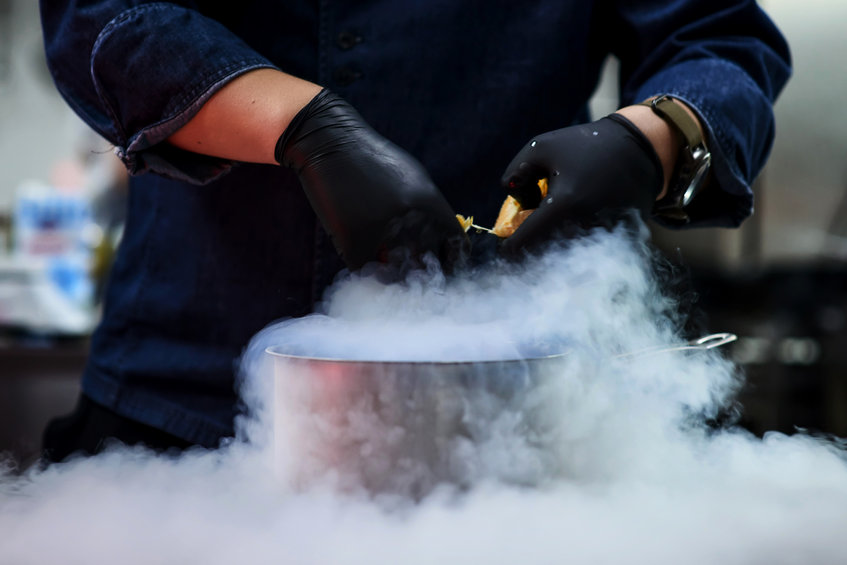
Ice makes a lot of things possible in the commercial kitchen. Whether used to keep things fresh and cold or to add more flavor to refreshments, ice is quintessential in the modern restaurant kitchen. You can make better use of this ever-present ingredient to enhance productivity in the kitchen, and even improve the taste and quality of your offerings. Cooking with ice can include a variety of processes, whether it’s blanching or emulsifying ingredients to create a uniform texture. Ice cooking can also help you retain protein structure in meat offerings so that customers can experience a pronounced expression of flavor in their delicacies.
The availability of commercial ice machines can make cooking with ice a norm in the kitchen. Seasoned chefs agree that ice is not merely limited to the beverage section, and finds more applications than commonly understood. Read on as we discuss the various tasks that are achieved with the use of cooking ice, so you always produce lip-smacking dishes in your kitchen.
Ice Cooking Techniques
Here is a list of common techniques in the kitchen that use cooking ice to provide enhanced results. Master these to become the most sought-after ice cook in your kitchen.
- Blanching
Blanching is a process that involves both boiling water and an ice bath to ensure vegetables, greens, and even certain meats are at the perfect consistency. The vegetables or greens can be dropped into a pot of boiling water for around 30 seconds to a minute. Following this, you need to transfer the veggies into a large bowl of ice and water. This shocks the ingredients and stops the cooking process. This form of ice cooking enables you to retain color and nutritional value. Blanching can also be used for soft seafood like shrimp that tend to cook in a short period.
- Putting the Crunch in Salads
An ice bath can help raw vegetables retain their crunch and fibrous texture by keeping them fresh. The ice water replenishes the dried-out cells in the vegetables, ensuring they remain hydrated. This also enables beans, lettuce, celery, and other vegetables to retain their characteristic snap. The water and cold temperature have been shown to rejuvenate and bring out the color in raw vegetables.
- Emulsification
Cooking with ice can help you make a perfect emulsion due to colder temperatures that make the emulsification process simple. If you’re looking to make the perfect vinaigrette or an aioli, all you have to do is add a couple of ice cubes into the shaker or the blender along with the ingredients to yield perfect results. The oil will not separate from the rest of the mixture thanks to the cold temperatures.
- Retain Protein Structure
Using an ice bath to keep meats fresh after removing the packaging is a great way to prevent shrinkage and loss of moisture. This is especially important in the case of seafood. The ice bath also ensures the meat remains juicy and succulent throughout the cooking process. The presence of water within the meat ensures the duration of cooking will be cut short, an additional benefit.
- Aerate & Homogenize Beverages
An interesting way of cooking with ice is to add it to coffee. Blending or shaking espresso with a couple of ice cubes and an amount of sweetening agents can help you address the bitterness, and also add a layer of froth to the beverage. Ice enables a greater infusion of air into the mix, aerating coffee. This makes your offering more palatable and aesthetically pleasing. Ice cooking can also be used for other coffee-based beverages like frappes and macchiatos.
- Peel Eggs in No Time
Peeling boiled eggs can be quite an annoyance in the kitchen. Using an ice bath to cool off the eggs can help you peel off the outer shell quickly. Not only are the eggs easier to handle, but the shell is more uniform and less brittle when compared to eggs that are peeled immediately following the boil. The ice bath also shocks the egg and stops the cooking process, ensuring the texture and consistency of the egg are upheld.
- Master the Art of Garnishing
Ice cooking helps your garnishes look vibrant and attractive. Whether your list includes scallions, parsley, or a curled carrot, you can be sure of a fresh-looking and richly colored garnish when you cook with ice. Soaking garnishes in an ice water bath can help you present your dishes better. The cold temperature constricts the structure of the garnish, pulling together the curl or the existing shape of the parsley. Do not remove the garnish from the ice bowl until you’re ready to serve the dish.
- Fresher and Thicker Smoothies
Adding ice to smoothie ingredients in the blender can help bring together all of them. The ice can address the heat generated by the spinning blades, and reduce the temperature within the jar. This helps to bring together all components of the smoothie, giving you a smooth and thick mix without lumps and unbroken ingredients.
- Keeping Rice Fluffy
A common problem with refrigerating cooked rice is that it tends to lose moisture. Subsequently, its fluffiness is lost too. Adding an ice cube to the rice when reheating brings back moisture. This enables it to regain its texture and fluffiness. The technique can also be applied when reheating other cooked cereals like barley, millet, or quinoa.
- Creating Perfect Desserts
Whether it’s a sorbet or a shaved ice delicacy, ice cooking has you covered. Ice at the dessert bay is a blessing, and even cooked desserts can benefit from it. Custards and mousse can be cooled rapidly using an ice bath, helping you achieve a smooth consistency in the mix.
Cooking with ice can help you achieve great results. Use these ingenious ice cooking techniques to expand your functionality in the kitchen, and gain five-star ratings for masterfully crafted dishes.














